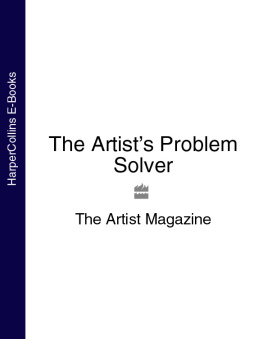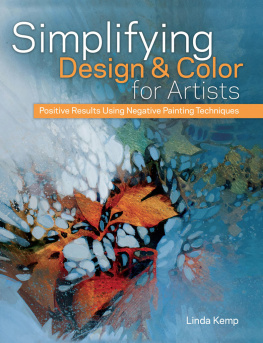Introduction

Humans are everywhere. It is hard to find a space where people or signs of their presence, are not clearly visible. A figure in art strikes an immediate chord because it is as if we are looking in a mirror. A figure, almost any figure, becomes an irresistible and automatic focal point in a painting. It does not matter how abstract it is, what size it is or how much of the figure is shown, it will always attract the viewers eye. As well as attracting our eye, a figure adds a narrative component to our subject. A viewer becomes involved with the figure in the painting and connects with what the figure is doing.
Painting figures from life has always been the most elementary exercise for an artist to hone their eye to proportion, form and nuance. The human figure is the most complex and intriguing form with which to work.

Ebook 7 Figures Add Focus, is one ebook I have been eager to write as I love figurative works. Indeed, at one point, I thought that this would be my main area of interest as an artist. Although I have found other areas of intrigue, I constantly return to the figurative element because I enjoy finding compositions that provide an exciting setting for a figure or two.
Some artists seem frightened or hesitant to include figures in their paintings and by not conquering this aversion, miss out on a very special opportunity to add another dimension to the communication of ideas in their work.
The first six chapters of this ebook deal with the more technical aspects of painting figures, starting with the challenges of life drawing sessions and how to get the most from these essential exercises. The simplest linear marks can convey so much and the human form holds endless variation. Single line drawings, done in a matter of seconds, will hold the energy of a pose. This moment will be frozen in time, but will never be static or cold. Convert the line into shape and tone, and the form of the figure is captured.
Learning the skills associated with brush control and energized mark making means you can use figures with confidence. This brushwork, so crucial for making informal, energized figures as a part of your paintings, is the next area of skill development. Discovering the kinds of brushes that will assist you and how to work with them to achieve convincing figures makes for fascinating reading.
Studying the figure to understanding the value of gesture for communicating emotion, attitude and movement is a powerful tool for all artists. This involves developing a keen eye when observing others as well as the ability to pick the important aspect of any pose. Other areas of discussion include scale, tone and portraiture .
When you start combining an awareness of the essential aspects of the figure with well-developed painting skills, plus a strategic approach to a specific subject, you will achieve interesting figure paintings.

Following the first six chapters on skill and technique you will find six chapters devoted to different ways you can work with figures in your paintings and how they can enrich the painting process for both yourself and your audience. Chapter 13 explores how, by adding a figure or group of figures, you change the narrative component of your painting.
The opportunities for expressing humor, making social comment and illustrating moments from daily life are numerous and I enjoy this aspect of figurative painting enormously. I also savor the chance to add a caption that adds to the imagery. The seafood market image (Plate 3) maximizes the color contrast of orange and blue, creating an image that captures more than a moment in time at the market. I imagine, in the future, that the blue plastic bags so prevalent now, will be replaced by some other, less environmentally intrusive solution. This scene will be frozen in the 21st century simply by the inclusion of these objects in the image.
Communication is about exchanging ideas and emotions with other human beings. Embrace this connection and explore the narrative element of picture making when developing subjects that feature the human form. If you lack the confidence to work figures into your paintings, some of the strategies talked about in this ebook should facilitate a change in attitude. Using figures is a great way to communicate your view of your fellow humans as you develop your artistic voice.
Enjoy this ebook as much as I have enjoyed bringing it together for your perusal, especially the fun I had painting the images you will see.
1. Life Drawing

Life drawing sessions
Drawing figures from life, whether in an everyday environment or in the studio during a life drawing session, is the starting point for most arts practices. This is where the eye and hand are trained to work together.
The simplest, most direct examples are the single line studies that may take one or two minutes to complete. Examples seen in Plates 4 6 are using a fluid relaxed linear style either seeking the correct line, or using economy of line. They show how the artist can, by the merest variation in a line and its direction, communicate attitude, tension, type of clothing, change in direction and a myriad of other signals for the viewer to interpret.
When I am working consistently at my life drawing sessions my eye is keenest and my hand eye co-ordination is in tune. If you do not attend life drawing sessions then do yourself a favor and start. It does not have to be a tutored session. Just go and draw, and draw, and then draw some more.

Fluid line
Life drawing is all about an instant response to an object that is only static for a short time. Capturing the essence of the pose and registering the aspect that is most important is a skill that takes practice. Plate 5 shows a pose that is all about the weight distribution on one hip and the placement of the hands on hips. I have sketched with the pen to get the approximate feeling of the pose. I only add a more definite line when I am sure of the placement. I really enjoyed this 10 minute snapshot.
I have 15 books of drawings like this and they hold a valuable record of my time at life drawing sessions in the studio at Dunmoochin where Clifton Pugh used to paint.



















